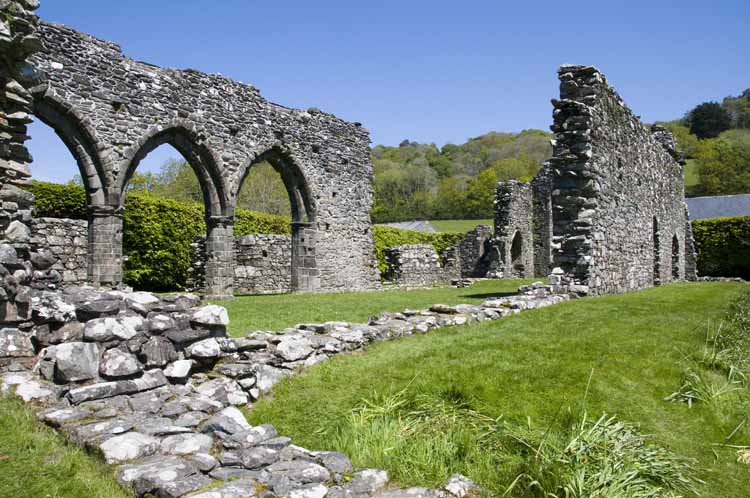Cistercian Abbey at
Cymmer, Powys, Wales.
Cymmer was founded in 1143 and was settled with a colony
of monks from Whitland. The original settlement was at Dyvanner (now Ty
faenor). It seems that the community was unsuccessful at this site and
moved to Cymmer just over thirty years later. Cymmer was a gift of land
from Cadwallon ap Madog, the chief lord of the Welsh district of cantref
of Maelienydd. He was killed three years later by the Marcher lord Roger
Mortimer, who then assumed patronage of the abbey. Cymmer was the most
remote of all the Welsh Cistercian houses and was described at the
beginning of the thirteenth century as situated ‘in a mountainous
district remote from parish churches’. The monks of Cymmer Abbey were
confronted with a problem of conflicting loyalties: the abbey was
endowed by both Welsh and Anglo-Norman lords, and whilst being Welsh
through and through, it was important that the monks showed allegiance
to the English king. This dilemma caused many problems for the community
over the years. In 1228, for example, royal forces burnt one of its
granges for supporting the Welsh cause. Three years later, the English
army was apparently tricked into an ambush by a Cymmer monk and in
revenge Henry II burned one of the abbey granges and levied a fine of
£200 on the abbot. The abbey also suffered from some
internal problems. In 1195 the lay-brothers of Cymmer stole their
abbot’s horses because he had forbidden them to drink beer. The
offending monks were to make their way to Clairvaux on foot and abide by
the decision of the abbot of Clairvaux. The abbey was originally
intended for sixty monks but, after the Welsh wars, it is unlikely that
the abbey was wealthy enough to support such a large community. The
economic difficulties of the fourteenth century, alongside heavy damage
incurred during the revolt of Owain Glyn Dwr (1401-1402), also greatly
impoverished the monastery. In 1535, there was a tiny community of three
and an annual income assessed at just £25. The house was surrendered two
years later. The site later passed to the Fowler family who defended the
property for the royalist cause during the civil war of the 1640s.
Despite their best efforts, the house was unfortunately stormed and
wrecked in 1644. Modern excavation of the ruins began in the late 19th
century. Sources:

The Cistercian's in Yorkshire,
Sheffield University